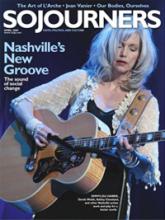I am a product of American evangelicalism. Much of what I believe, know, and try to live out arises out of my involvement and development in the North American evangelical subculture. I grew up and found a personal faith in the context of a Korean immigrant church that tried to balance the best of the Korean homeland with the best of the “American” version of the Christian faith.
Yet I am confronted with the reality of feeling marginalized in the context of my own faith tradition—that as immersed as I am in evangelicalism, I am often still seen as an outsider. In my journey as a neophyte believer, a youth pastor, a campus ministry participant, an emerging leader, a church planter, a local church pastor, and a seminary professor, I have increased in my sense of frustration with the cultural captivity of the church. I grow weary of seeing Western, white expressions of the Christian faith being lifted up while failing to see nonwhite expressions of faith represented in meaningful ways in American evangelicalism.
Fifty years ago, if you were asked to describe a typical Christian in the world, you could confidently assert that person to be an upper-middle-class white male living in an affluent and comfortable Midwest suburb. If you were to ask the same question today, that answer would more likely be a young Nigerian mother on the outskirts of Lagos, a university student in Seoul, South Korea, or a teenage boy in Mexico City. European and North American Christianity continue to decline, while African, Asian, and Latin-American Christianity continue to increase dramatically. By 2050, African, Asian, and Latin-American Christians will constitute 71 percent of the world’s Christian population.
Read the Full Article
